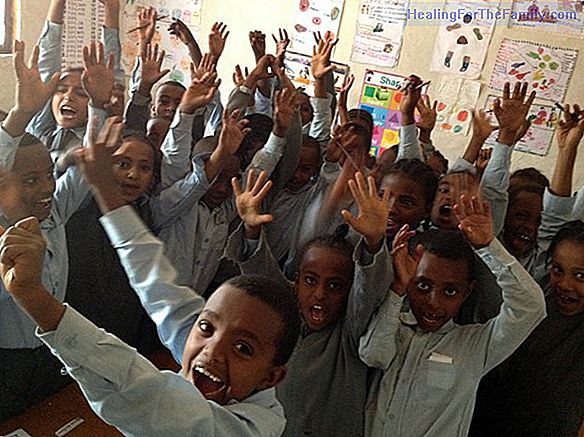Games for children with blindness or blind children
What happens if the child is born with a visual disability? How do you play, explore with visual diversity or birth blindness? Certainly, it is amazing how the rest of the senses can 'supplement' or complement the visual deficit. That is why infants with visual diversity develop even more if the res
What happens if the child is born with a visual disability? How do you play, explore with visual diversity or birth blindness? Certainly, it is amazing how the rest of the senses can 'supplement' or complement the visual deficit.
That is why infants with visual diversity develop even more if the rest of the senses, especially touch and hearing, with which in addition to exploring, they are oriented. Perhaps it is difficult for us visionaries to conceive a vision without sight, but, paradoxically, they can sometimes describe in greater detail, that a seer child, that toy that they only touch. For this reason, their exploratory skills can be and, in most cases, are equal or comparable to children without visual disabilities.
How to choose games for children with blindness

Under this premise, there are few adaptations in games and toys that must be made to be accessible to children with visual diversity. Although a basic and fundamental fact prevails: supplying the visual by the tactile, sonorous, gustatory or olfactory but, mainly, by the first two.
Although we must bear in mind that some games that contain drawings or complicated routes are not accessible, given that sometimes it is difficult to describe them in a tactile or sensory way. For this reason, it is advisable that:
- That the course of the game is wide (spaces and large squares but well defined sensorially). Del - In the same way, that objects such as figures, chips or pawns
are large and easy to recognize by touch . That they are the closest thing to the real object, without decorative aspects.- Many times toys acquire a fundamental role for children with visual impairment, especially if they have no visual rest. These can serve to explain to the child how is a building, an airplane, as well as we can go with the plastic animals to a farm or zoo and show the child as a chicken, a horse, although the most advisable thing is that if can, touch the real object or a part, reinforcing with the replica.
- That the colors are contrasted
for those children with low vision. Que - That the illustrations are simple to be able to describe them and if they are with contrast of textures even better, since the own child will be able to identify them.- That there is not too much text
, that it is in braille and the writing is increased if it is about children with low vision.
- Likewise, the acoustic environmentshould not be too noisyand toys can be adapted acoustically or by means of touch (as a resource other than well contrasted and defined colors).
- The adaptation must be based on the player's age and visual deficiency and it is preferable to use solid material. - There is no unnecessary effort to adapt a game. Sometimes, just add some simple signs to make it accessible to everyone. No - Do not make games or toys specific to children with visual diversity, it is much more educational and less discriminatory, that all children can play together. It should be noted that the perception of these children, especially without visual remains, is analytical, therefore
we must teach the object in parts
so that a composition of the object can be made in its entirety. For example, for the blind child a table is a wooden plank with four sticks that reach the ground, if you touch a glass table you will not recognize it as such until you are informed that it is too.
This process of constant stimulation should be initiated from birth, providing the child with a variety of tactile and sensory experiences, always respecting their interests and the times and rhythms of each child and without over-estimating it.
As we see, once again through the game we reinforce and create fundamental psychomotor skills in the development of children with visual deficit, at the same time we see that the adaptation or accessibility of the games fosters the empathy of their peers in an inclusive environment and egalitarian thanks to a design for all.












